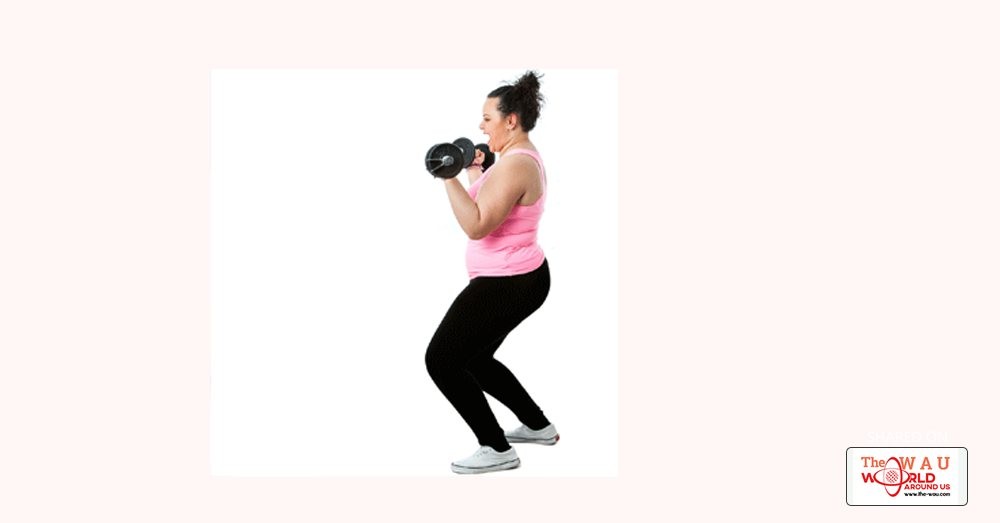It's a predicament that's been dubbed the 'jiggle factor' and is something every overweight person and large-breasted woman identifies with. Basically the 'jiggle factor' refers to the added motion from belly fat, thighs or breasts.
Apart from being uncomfortable and often embarrassing, this can have health implications and lead to injury. Most often it's the knee joints which are at risk, although the ankles, back and spine are also affected.
Read: 7 ways to make fitness fun
What the experts say
Dr Dion O'Cuinneagain of the Sports Science Orthopaedic Clinic at the Sport Science Institute of South Africa (SSISA) strongly advises that overweight or obese people should consult their doctor, physiotherapist, biokinectician or personal trainer before starting to train.
After you have the approval and advice of a professional, most experts agree that the best form of training for overweight or obese people should be individualised and monitored.
Read: A beginner's guide to spinning class
"Programmes should be tailored to the individual's needs, taking into account the physical condition of the person. In obese patients, the most effective approach is to work out as part of a team," he said.
What's in and what's out
O'Cuinneagain says that joints and limbs at risk of injury if exercises are not executed properly include all the lower limb joints, as well as the spine, knees, ankles and back.Therefore, he says that overweight, obese and busty women or anyone who has joint pain should stay away from cardiovascular exercises such as running, jogging and aerobic or step classes.
However, most people looking to lose weight through exercising are told that cardiovascular exercise is the way to go. So what options are there? More than you think, says O'Cuinneagain.
"Non-weight-bearing exercises such as cycling, rowing and swimming are ideal ways to train, and the use of weights is also effective," O'Cuinneagain says. As these exercises put no pressure on the joints, but still get the heart going, the risk of injury is reduced while the overall effect is not changed.
Read: 7 top butt exercises for guys
The same recommendation is given for women who have large breasts and find certain exercises difficult or painful to do. But what else will help curb the incorrigible jiggle?
O'Cuinneagain's advice? "Wear a good bra!"
Get the right gear
This is good advice considering that, apart from changing the way you exercise, another way to minimise the jiggle factor's effect is to ensure you choose the correct clothing.
An Australian study tested a sports bra against a normal bra, a cropped top and going bare breasted, and found that, in comparison to going bare-breasted, a sports bra reduced pain and vertical movement by 50 percent. The cropped top and normal bra reduced breast pain and vertical movement by only half of that.
As for your feet, the American Orthopaedic Foot and Ankle Society claims that many of the more than 4.8 million visits to doctors made each year for foot and ankle problems are problems that could have been prevented with better footwear and foot care.
Read: Pick your sport and get your dream body
This is why the experts recommend choosing shoes which have a wide enough toe box with room for all your toes to lie comfortably flat. You should also look for shoes which are shaped like your foot, made of soft, breathable material like leather or suede and which mould, breathe and have some give. Shoes should also be under an inch in height.
Don't get discouraged!
One of the worst side-effects of the jiggle factor is that it discourages people from exercising at all. But this will only exacerbate the problem in the long run, as you will never lose weight without some form of exercise.
It seems a vicious cycle, but there is a solution.
O'Cuinneagain suggests that for people who are demotivated and in need of that little extra push, training as part of a team or a group would be most beneficial. By doing this, you will feel less self-conscious, be encouraged by class mates and have the guidance of a professional trainer to ensure you don't injure yourself.
"Health professionals can also encourage and inform the person about how getting down to a 'normal' BMI will impact on them physically and mentally and have a really positive effect on their fertility, productivity and overall happiness," he said.
Share This Post












